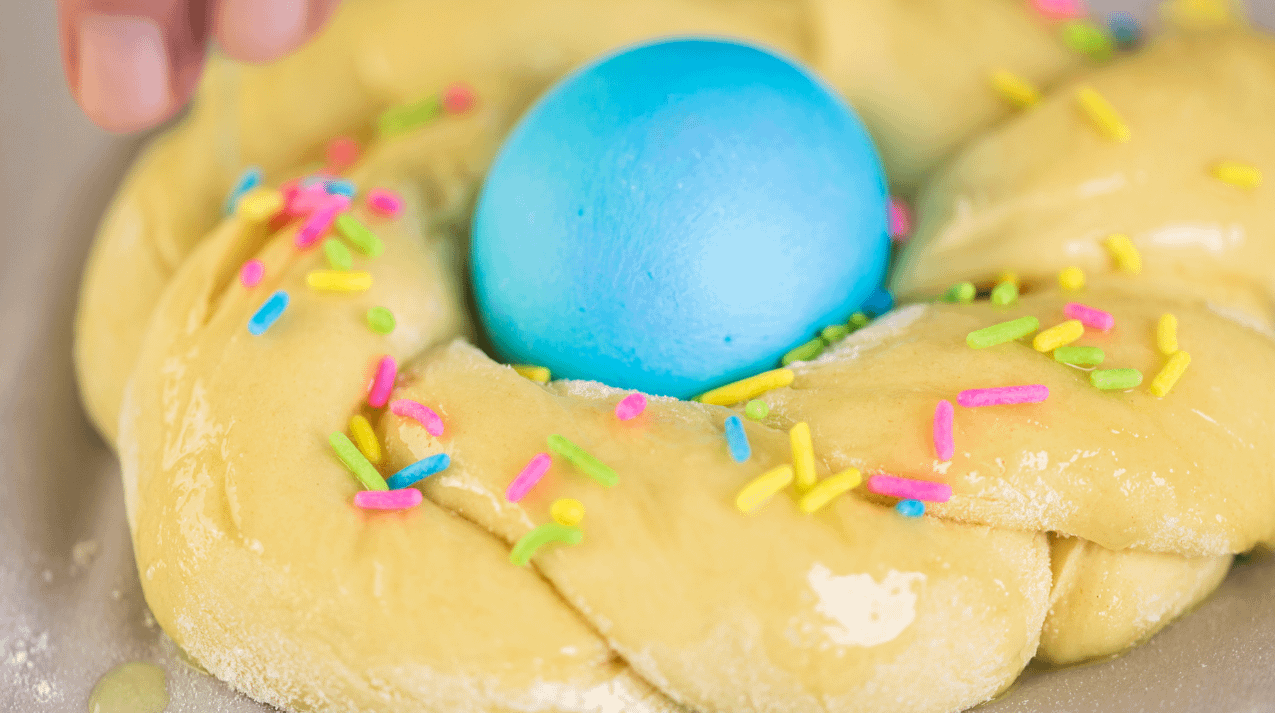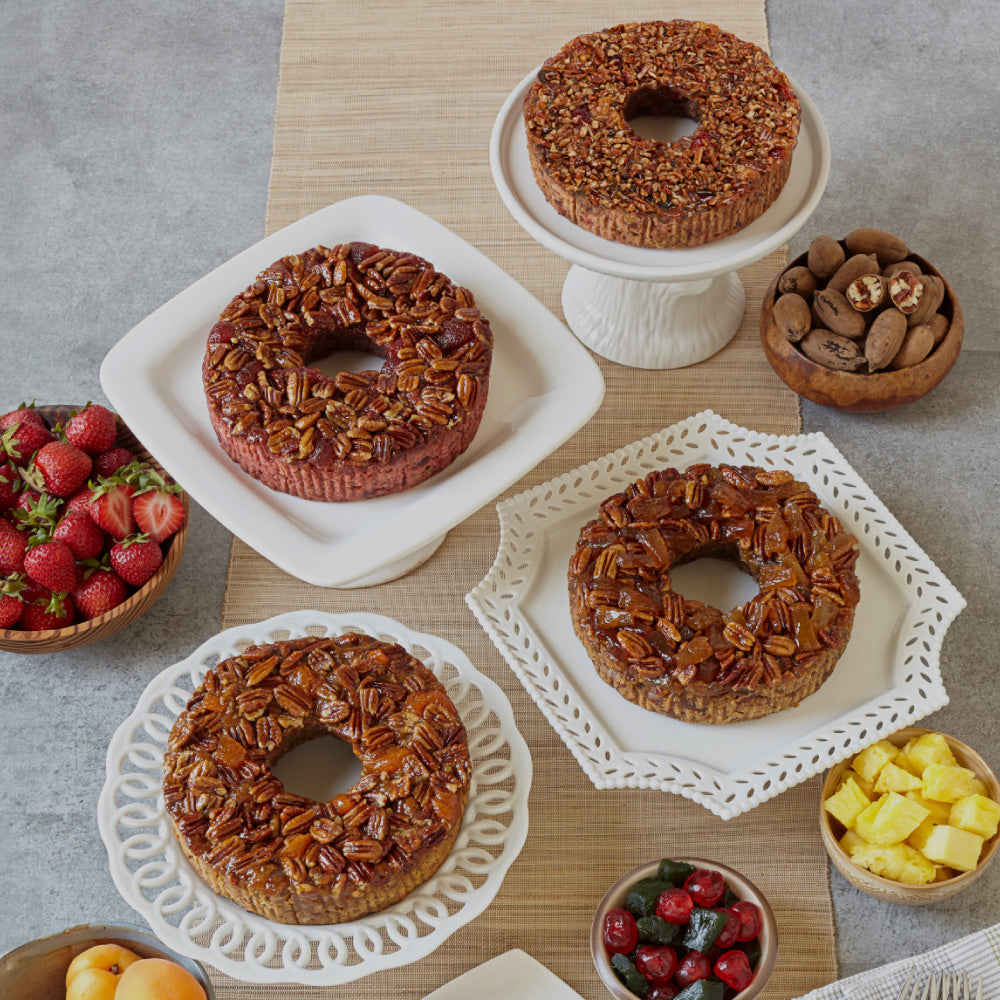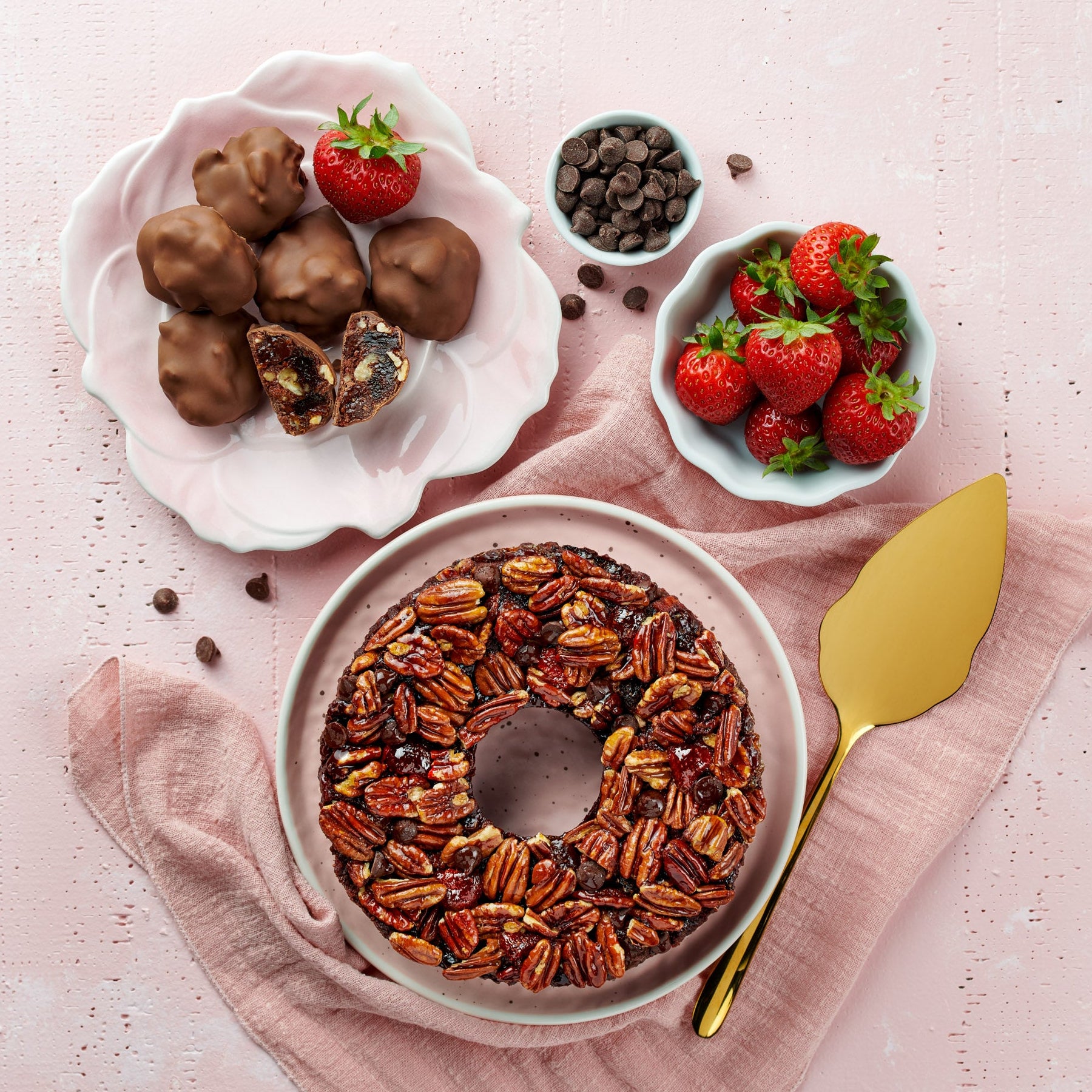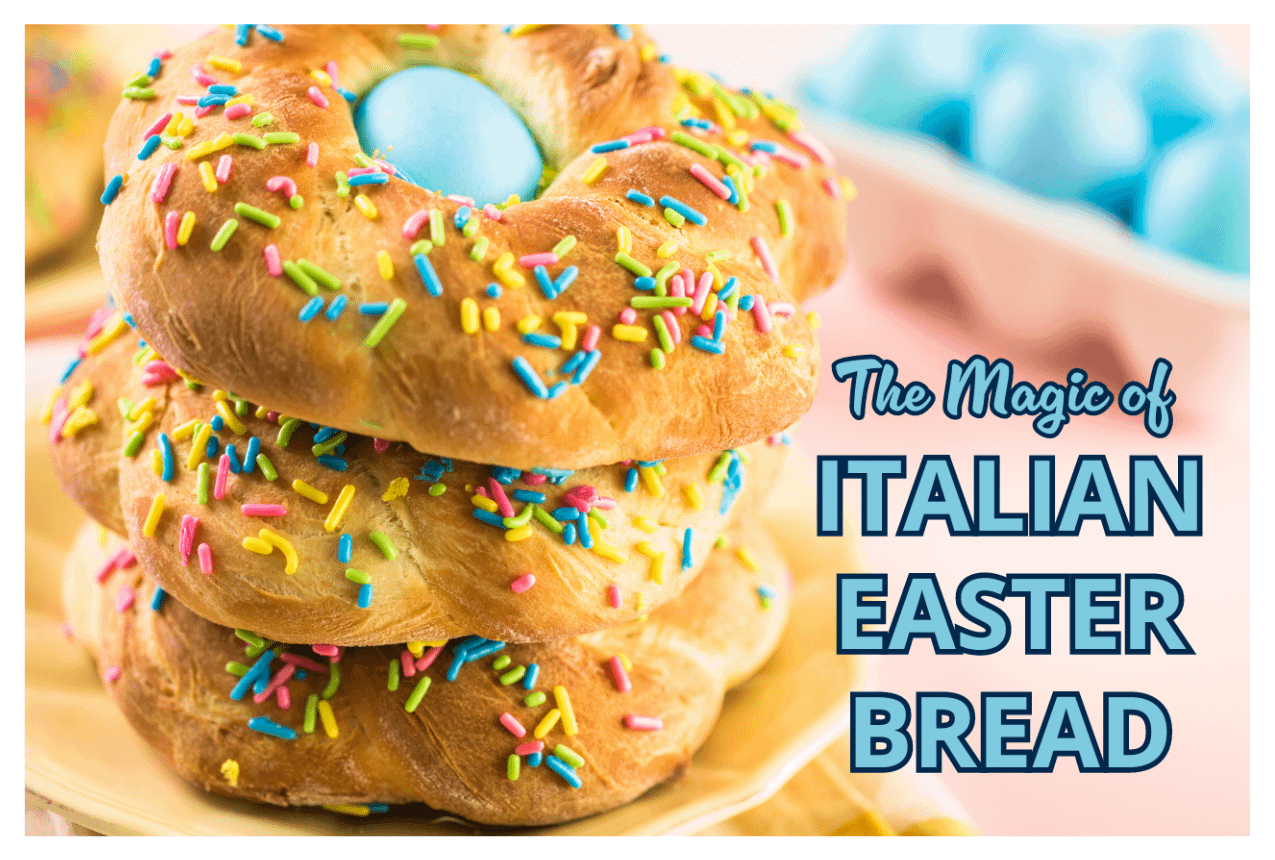Discovering the Origins & Traditions Surrounding This Iconic Bread
As Easter approaches, households across Italy come alive with the aroma of freshly baked Italian Easter bread. This beloved traditional bread, known as "Pane di Pasqua" or "Colomba Pasquale," holds a special place in Italian culture and cuisine. Its significance extends beyond its delicious taste, embodying the spirit of Easter and the warmth of family gatherings.
Join us as we embark on a journey to uncover the origins, ingredients, and traditions surrounding this iconic bread and discover why it has become an essential part of Easter celebrations in Italy and beyond.

The Origins & Significance of Italian Easter Bread
The origins of Italian Easter bread can be traced back to ancient pagan rituals celebrating the arrival of spring and the fertility of the earth. These pagan celebrations often involved baking bread as a symbol of abundance and renewal. Over time, with the spread of Christianity throughout Italy, these pagan customs merged with Christian Easter celebrations, which commemorated the resurrection of Christ. As Christianity took root in Italy, the tradition of baking bread during Easter became intertwined with religious significance. The bread came to symbolize not only the abundance of life but also the promise of new beginnings and the triumph of light over darkness.
Interested in learning about how the origins of other Easter traditions? Check out our blog describing how bunnies became the unofficial mascot of Easter—The Origins of the Easter Bunny
Common Ingredients in Italian Easter Bread
The ingredients and preparation of Italian Easter bread vary slightly depending on regional preferences and family recipes, but some common elements remain consistent. The dough typically includes flour, sugar, eggs, butter, and milk, enriched with aromatic additions such as citrus zest, vanilla, anise, or almond extract. Italian Easter bread may also include optional additions such as raisins, candied fruit, nuts, or aromatic spices like cinnamon. These ingredients add texture, flavor, and visual interest to the bread, creating a more indulgent and festive treat.

Defining Characteristics of Italian Easter Bread
Italian Easter bread boasts three unique characteristics that distinguish it as a beloved and iconic treat: its texture, its shape, and its decoration. Each aspect contributes to the bread's allure and symbolism, making it a cherished centerpiece of Easter celebrations.
- The texture: Italian Easter bread offers a delightful combination of softness, lightness, and richness. When properly made, this delicacy has a soft texture that's similar to Challah bread and boasts a tender and airy crumb with a delicate yet substantial structure that yields a satisfying chewiness.
- The shape: Each aspect of the bread's shape carries profound meaning, reflecting themes of eternity, rebirth, and abundance. Typically formed into a round or braided shape, with some variations featuring wreath-like designs or intricate patterns, Italian Easter bread’s intertwining strands of dough symbolize the bonds of family, community, and faith, reminding us of the importance of solidarity and mutual support.
- The decoration: Some variations of Italian Easter bread feature colorful sprinkles, icings, and brilliantly dyed raw or hard-boiled eggs. Typically nestled in the center of the dough, these eggs represent new life, fertility, and the promise of abundance. By incorporating eggs into the bread, Italians honor the symbolism of Easter eggs in Christian tradition while also paying homage to the ancient pagan customs that celebrated the return of spring and the fertility of the earth.

Traditional Variations & Regional Specialties
Italian Easter bread boasts a rich tapestry of regional variations across Italy, each with its own unique ingredients, shapes, and flavors. From north to south, the diversity of Italian Easter bread reflects the country's rich culinary heritage and cultural diversity. Let's explore some of the most notable regional variations:
- Casatiello (Naples): Originating from Naples, Casatiello is a savory Easter bread that stands in contrast to the sweet versions found in other regions. Typically made with a rich dough that includes flour, eggs, and butter, this variation often incorporates additional ingredients such as cured meats, like salami or pancetta, and cheese, such as provolone or pecorino. The dough is shaped into a round loaf and traditionally baked with whole eggs nestled within.
- Torta Pasqualina (Liguria): Originating from the Liguria region, Torta Pasqualina is a savory Easter pie rather than a traditional bread. The pie is typically filled with a mixture of ricotta cheese, spinach, and eggs, symbolizing rebirth and fertility. Like other variations, in this regional adaptation, eggs are also arranged on top of the pie in a decorative pattern. Traditionally, Torta Pasqualina is served as part of the Easter feast alongside other savory dishes.
- Cuddura cull'ova (Sicily): Hailing from Sicily, Cuddura cull'ova is a sweet dough-enriched bread shaped into a wreath or circular form and decorated with colorfully dyed whole raw eggs. The name "Cuddura" is derived from the Sicilian word "cuddura," which means "ring" or "bracelet," referring to the bread's circular form. "Cull'ova" translates to "with eggs," highlighting the prominent feature of the bread.
- Pane di Pasqua (Central Italy): In central Italy, Pane di Pasqua is a fragrant, enriched loaf that may be shaped into various forms, including braided loaves, twisted rings, or decorative shapes such as doves or crosses. This variation is sometimes flavored with additional ingredients such as raisins, candied fruit, or aromatic spices like cinnamon or anise and is served plain or toasted alongside butter or jam.
These are just a few examples of the diverse regional variations of Italian Easter bread found throughout Italy. Each variation reflects the unique culinary traditions, cultural heritage, and local ingredients of its respective region, adding richness and diversity to Italy's Easter celebrations.
Celebrating with Italian Easter Bread
In Italy, Easter is a time of joyous celebration, and Italian Easter bread plays a central role in the festivities. Families gather together to knead and shape the dough, sharing stories and traditions passed down through generations. As the bread bakes, the kitchen fills with anticipation and excitement, and the scent of freshly baked bread fills the air. Once the bread is cooled and ready to enjoy, it is often served as part of a lavish Easter brunch or dinner, alongside other traditional dishes such as roasted lamb, savory pies, and sweet treats like "Pastiera Napoletana" or "Torta Pasqualina." Each bite of Italian Easter bread is a delicious reminder of the bonds of family and the joy of Easter.
Beyond Italy: Sharing the Tradition Worldwide
While Italian Easter bread holds a special place in Italian culture, its popularity has spread far beyond Italy's borders. Italian immigrants brought their cherished traditions with them to countries around the world, sharing the joy of Easter bread with new communities and generations. Today, Italian Easter bread can be found in bakeries and homes across the globe, cherished by people of all backgrounds for its delicious taste and cultural significance. Whether enjoyed as part of a traditional Easter feast or as a special treat to mark the holiday, Italian Easter bread continues to bring people together and celebrate the spirit of Easter.

Make Your Own!
Italian Easter bread is more than just a delicious baked good—it's a symbol of tradition, family, and the joy of Easter. From its ancient roots to its modern-day celebrations, this beloved bread has remained a cherished part of Italian culture and cuisine. Whether shaped like a dove or braided into a wreath, adorned with dyed eggs or colorful sprinkles, Italian Easter bread embodies the spirit of the holiday and the warmth of family gatherings. So this Easter, why not embrace the tradition and bake your own Italian Easter bread?
Italian Easter Bread
Servings: 6 - 10
Prep Time: 2 - 3 hours
Active Cooking Time: 25 - 30 minutes
INGREDIENTS
4 cups all-purpose flour
1/2 cup granulated sugar
1 packet (2 1/4 teaspoons) active dry yeast
1 teaspoon salt
1/2 cup warm milk
1/2 cup warm water
1/2 cup unsalted butter, melted
3 large eggs
Zest of 1 lemon or orange
1 teaspoon vanilla extract
Colored sprinkles—optional
1/2 cup mixed dried fruit (raisins, currants, or candied citrus peel)—optional
6 dyed Easter eggs—optional
STEP 1
In a medium-sized bowl, whisk flour and salt together and set aside. In a separate large stand mixing bowl, combine warm milk (120-130°F ), warm water, and sugar. Sprinkle the yeast over the mixture, gently stir, and allow the mixture to sit for about 5-10 minutes or until frothy. Once frothy, add melted butter, eggs, lemon or orange zest, and vanilla extract. Stir well to combine.
STEP 2
Place your mixing bowl containing your yeast-activated slurry on your stand mixer. Make sure your stand mixer is fitted with a dough hook. Turn on your mixer to medium speed and gradually add the flour mixture to the wet ingredients until a dough begins to form and starts to pull away from the sides of the bowl. This should take 2-3 minutes. As the mixture combines, scrape the sides of your mixing bowl with a spatula as needed to ensure all the flour is incorporated. If electing to include dried fruit, add it now. Knead until it becomes evenly distributed throughout the dough.
STEP 3
Turn the dough out onto a lightly floured surface and hand knead for an additional 8-10 minutes or until smooth and elastic. Place the dough in a greased bowl, cover it with a clean kitchen towel or plastic wrap, and let it rise in a warm, draft-free place for 1-2 hours or until doubled in size.
STEP 4
Once the dough has risen, knock back the dough and divide it into six equal portions. Roll each piece to form 1-inch wide ropes, roughly 14 inches in length. Loosely wind two strands of dough together till a braid forms, pinching the ends together to create a circular loop. Place dough on a baking sheet, loosely cover it with plastic wrap or a dish towel, and place in a warm area for 30 - 60 minutes or until the dough has doubled in size.
STEP 5
While the dough is rising, set your oven rack to the middle position and preheat to 350°F.
STEP 6
Once the dough has doubled in size, brush the tops of each loaf of bread with an egg wash (1 large egg and one tablespoon of water whisked together). If desired, top the bread with sprinkles and gently place one dyed egg in the center of each braided ring. Do not press into the dough; it will sink as it bakes.
STEP 7
Bake the Easter bread for 25-30 minutes or until golden brown and cooked through. If the tops begin to brown too quickly, loosely tent the bread with aluminum foil. Remove the Easter bread from the oven and let it cool on a wire rack before serving. Enjoy the bread warm or at room temperature, sliced, and spread with butter or jam if desired.
Order an Easter Favorite Today!
World-famous since 1896, our DeLuxe® Fruitcake is not only the epitome of quality but also a classic Easter treat. Made with only top-shelf ingredients and expertly baked, our fruitcakes are created with our customers in mind. Order yours today!










Leave a comment
This site is protected by hCaptcha and the hCaptcha Privacy Policy and Terms of Service apply.